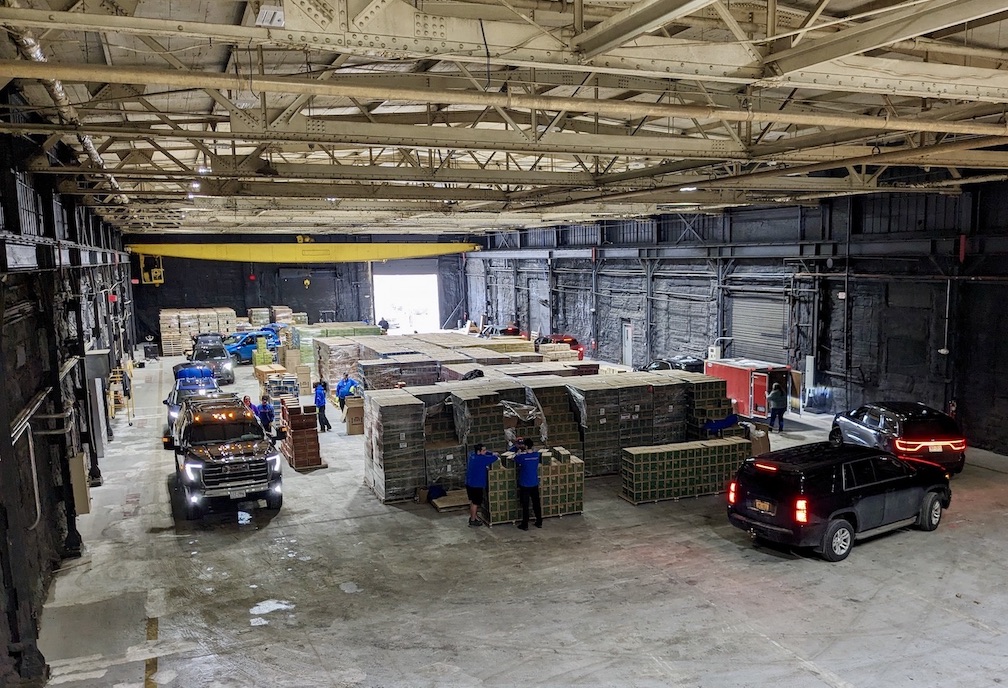Featured News - Current News - Archived News - News Categories
New York state crafting ‘fall action plan’ for back-to-school & seasonal pandemic surges
√ RFP released for independent after-action review of state response to pandemic
Gov. Kathy Hochul on Wednesday announced new COVID-19 preparedness initiatives to protect public health and support New York state's ongoing response to the pandemic. Hochul announced the state is working closely with public health experts to craft a “fall action plan” to address the potential for seasonal coronavirus surges later this year, as well as strategies to allow students to return safely to school this fall.
Hochul also announced a request for proposals has been released for an independent after-action review to assess the state's COVID-19 response, identify what worked and what did not, and serve as a guide for all local governments planning emergency response efforts.
"Since day one, my top priority has been to keep New Yorkers safe, especially as we prioritize safely navigating forward through this pandemic," Hochul said. "My team is working around the clock to bolster our preparedness against future pandemic surges and other related public health emergencies both in the short-term and the long-term. We've made real progress in our fight against COVID-19, and we remain vigilant in making sure that New York state emerges stronger than ever before."
Background on Fall Action Planning
Hochul’s team said, “The state is actively preparing a fall action plan to address potential pandemic surges later this year. Planning is being conducted in consultation with health policy experts and will also be informed by the voices of New Yorkers through a public opinion survey conducted by the state in mid-June that surveyed residents on issues related to the pandemic.”
Fall planning will focus on addressing the below, but not limited to:
√ A return to school strategy, including distributing 3 million tests to schools before the beginning of the school year.
√ Getting more New Yorkers vaccinated and boosted, including the ability to stand up mass-vaccination sites again if the need arises.
√ Encouraging New Yorkers to test early, test often.
√ Promoting more access to treatment and therapeutics, including a recently launched statewide hotline for New Yorkers who may not have immediate access to health care professionals, as well as an ongoing commitment to support New Yorkers struggling with the effects of long-haul coronavirus.
√ Readying stockpile of personal protective equipment (PPE), including 20 million tests ready to deploy where needed.
√ Strengthening hospital systems, including preparations to ramp up the state's surge operations center, if necessary.
√ Coordinating with federal and local partners.
Hochul's presentation on the fall action plan is available here.
Background on Pandemic After-Action Review
Hochul also announced a request for proposals to develop a pandemic after-action review, as part of New York state's ongoing pandemic preparedness efforts.
Her team said, “The purpose of the after-action review is to review the state's COVID-19 response, identify what worked and what did not, and examine how the state could have improved its response. The review will also serve as a guide for New York state and for other governments to use in order to respond quickly and effectively to significant emergencies, whether they are pandemics, natural disasters or other emergency conditions that create major disruptions to normal life.”
The review is said to accomplish the following objectives:
√ Review the state's COVID-19 response.
√ Identify strengths, best practices, as well areas where policies were deficient in meeting the public's needs; and identify key lessons to improve public health preparedness and response.
√ Report the key findings in a structured and timely manner, and provide clarification as needed.
√ Provide key recommendations and prioritize or categorize those recommendations.
√ Prepare a planning guide for the state for use in a future emergency, including identification of the first steps the state should take when an emergency on the level of COVID-19 occurs and overwhelms existing plans; and recommendations on how to approach and guide executive decision-making.
√ Recommendations should be specific, feasible, time-bound, measurable, and adequately translated into an action plan(s).
The review will focus on the following major areas of the state's COVID-19 response, including but not limited to:
√ Review policies and guidance on the management of hospitals and in-patient facilities in light of the pandemic's demands, including which medical procedures could and should continue.
√ Review policies and guidance for the transfer of individuals, particularly the most vulnerable individuals, into congregate settings, including homeless shelters, group homes, nursing homes, jails and prisons, and which entities are most qualified to make those decisions, and the efficacy of infection controls within those entities.
√ Review policies and guidance for the shutdown and reopening of educational institutions, and how early childhood, school age, special education and post-secondary educational programs were handled during COVID-19; and how they should be handled in a future emergency.
√ Factors for determining which businesses, industries and functions should be considered essential, and for what purposes.
√ The securing and procurement of essential goods and services to meet New Yorkers' needs.
√ The protection needed for essential workers in the workplace, and programs and services needed by these workers, who are often from low-income communities of color.
√ Coordination among and between the state and its federal and local counterparts, including relationships with mayors, county leaders and other elected officials.
√ Effective education and communication with the public, including the sharing of data and other information.
√ Staffing and expertise needed to plan and implement emergency procedures and specific functions that must be fulfilled.
Under the one-year contract term, the consultant is requested to plan and provide initial finding on priority areas within six months of the contract start date. More detailed analysis and additional areas will be incorporated over following six months culminating in a final after-action report within one year.
The aim of the review is to better inform New York state's pandemic response, and is not intended to conflict with other outside ongoing reviews. The governor has appointed Jackie Bray, commissioner for the New York State Division of Homeland Security and Emergency Services, to oversee the after-action review process.
A copy of the RFP is available here.





























